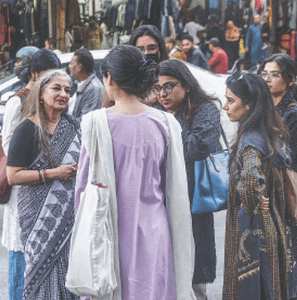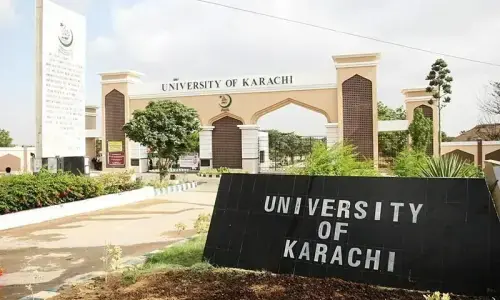DADU: Historians, archaeologists and residents of Dadu have urged the federal and provincial governments to constitute a committee, comprising archaeologists and historians, to look into the alleged use of substandard material in the ongoing repair and restoration work at the historical Khudabad Mosque, built during the era of the Kalhoro dynasty.
They warned that the whole structure of the mosque might collapse at any time unless the repair work was expedited and proper material was used.Khudabad, which remained the capital of Sindh during the Kalhoro era from 1701AD to 1750AD, is situated 13 kilometres south of Dadu town.
The Khudabad Mosque was built by Mian Yar Mohammad Kalhoro (1701AD to 1718AD) and with time became the emblem of the Kalhoro dynasty.
During heavy rains in 1994, three main tombs and 19 smaller ones inside the mosque were damaged. Conservation and repair work finally began 15 years later, in 2009, at a cost of Rs28 million.
The work — being done by only two men who apparently had no knowledge or experience of preserving a historical structure — was supposed to be completed by July 2012 but is far from being finished.
However, since repair work began in 2009, three big and 19 small domes have been repaired, according to project director Nasim Jalbani.
She said that the Sindh government extended the deadline by almost a year because the restoration work is very intricate and takes a long time. The work would now be completed by May 2013, she said.
The façade of the mosque was not yet complete, she said, adding that it would be finished soon.
Concerned over the slow pace of work and questionable quality of material being used in the restoration work, experts and local residents fear that the historical site might sustain further damage.
One of the labourers working at the mosque, Azhar Hussain, told Dawn that the tiles being used to restore the façade to its original shape were brought from Hala.
Experts also say that the tiles are different from the original ones.
A resident of Khudabad town, Allam Khan Kalhoro, said that material being used in the repair work was not up to the standard. Not only that, he added, the funds allocated for the conservation of the mosque were also being misused.
His complaint was corroborated by the former secretary of culture department, Hameed Akhund, who is co-author of the recently launched ‘Tale of the tile: the ceramic traditions of Pakistan’.
He said that he had received information that cement was being used in restoring the structure of the mosque when a ceramic material called ‘cheeroly’ should have been used, the same material used in the construction of the mosque. He said that historical monuments were preserved with the same material they were constructed from.
Mr Akhund said that there was a dire need to monitor the ongoing repair work at the Khudabad mosque.
“Since the dome at the entrance of the mosque hasn’t been repaired yet, rainwater keeps entering the mosque and causes more damage to its structure,” he said. “Katcha bricks were used in the construction of the mosque and they have been repeatedly exposed to rains. The structure can collapse any time.”
Mr Akhund added that old-type tiles, similar to the original ones, should be used in restoring the façade of the mosque.
The chief operating officer of the Society for Research, Heritage and Development, Abdid Solangi, told Dawn that the renovation work was started by the culture department without consulting any relevant experts.
An assistant professor of arts and design, Saeed Ahmed Mangi, said that relevant experts were not consulted before starting conservation work on the mosque because of which the original kashi (tile) work has been altered.
Prof Aziz Kingrani, a noted archaeologist and historian, shared that the Kalhoro dynasty was known for arts and architecture. “The Khudabad mosque is an emblem of the Kalhoro dynasty,” he said. “But unfortunately technical experts were not consulted for its restoration work. The tiles used in the construction of the mosque by the Kalhoros were removed and new ones were put in, but they are not the same.”
Talking to Dawn, a faculty member of the Institute of Arts and Design at Sindh University, Jamshoro, Dr Fatah Daudpoto, suggested that the Sindh government set up a body under the culture department for conservation, repair and protection of archaeological sites. But, he said, if historical sites continued to be repaired by the planning and works department, then the job would never be up to the standard. He demanded that all the Kashi work on the Khudabad mosque be done under the supervision of a team of experts.
Replying to these statements, project director Ms Jalbani said that cement had only been used in construction work while ‘cheeroly’ was used in repair and restoration work on the mosque. She said that consultants had been hired to survey the damage incurred to the dome at the entrance of the mosque and work would be started after they submit their report.


































